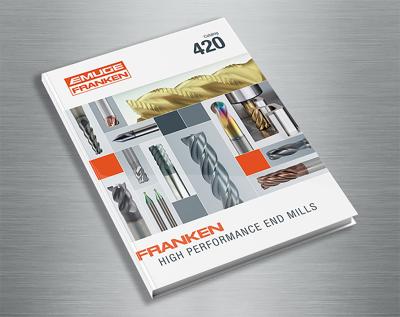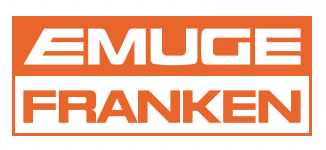
EMUGE-FRANKEN N.A, a leading manufacturer of high-performance taps, thread mills, drills, end mills and other rotary tools, has announced the launch of a new full line end mills catalog to support its growing end mill products expansion.
The 172-page catalog, brimming with hundreds of new products, specifications, technical materials, cutting data, drawings and images is available free in print by request at www.emuge.com/media-resources/order-brochures-catalogs, or via an online interactive version on the EMUGE-FRANKEN N.A. website: www.emuge.com.
“As we aggressively continue the expansion of our milling tools portfolio including the manufacture of end mills here in the U.S., as well as in Germany, the new catalog will be a key support and resource tool for our U.S. and Canadian customers and prospects, as well as our sales and engineering staffs,” said Bob Hellinger, President of EMUGE-FRANKEN N.A.
The launch of the EMUGE-FRANKEN N.A. Full Line End Mills Catalog also coincides with the recent brand name update in North America to EMUGE-FRANKEN, which it has been known as internationally since 1958. EMUGE-FRANKEN is the leading manufacturer of a wide range of high-performance end mills and has over 100 years of milling innovation, expertise, and experience including the innovation of Circle Segment end mill technology.
Contact Details
Related Glossary Terms
- gang cutting ( milling)
gang cutting ( milling)
Machining with several cutters mounted on a single arbor, generally for simultaneous cutting.
- milling
milling
Machining operation in which metal or other material is removed by applying power to a rotating cutter. In vertical milling, the cutting tool is mounted vertically on the spindle. In horizontal milling, the cutting tool is mounted horizontally, either directly on the spindle or on an arbor. Horizontal milling is further broken down into conventional milling, where the cutter rotates opposite the direction of feed, or “up” into the workpiece; and climb milling, where the cutter rotates in the direction of feed, or “down” into the workpiece. Milling operations include plane or surface milling, endmilling, facemilling, angle milling, form milling and profiling.
- milling machine ( mill)
milling machine ( mill)
Runs endmills and arbor-mounted milling cutters. Features include a head with a spindle that drives the cutters; a column, knee and table that provide motion in the three Cartesian axes; and a base that supports the components and houses the cutting-fluid pump and reservoir. The work is mounted on the table and fed into the rotating cutter or endmill to accomplish the milling steps; vertical milling machines also feed endmills into the work by means of a spindle-mounted quill. Models range from small manual machines to big bed-type and duplex mills. All take one of three basic forms: vertical, horizontal or convertible horizontal/vertical. Vertical machines may be knee-type (the table is mounted on a knee that can be elevated) or bed-type (the table is securely supported and only moves horizontally). In general, horizontal machines are bigger and more powerful, while vertical machines are lighter but more versatile and easier to set up and operate.

